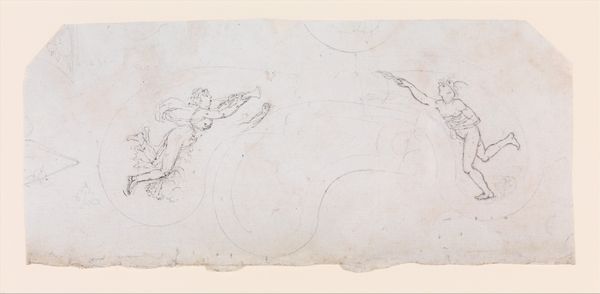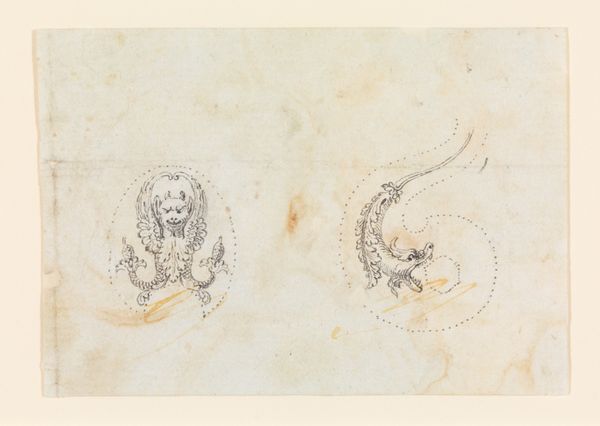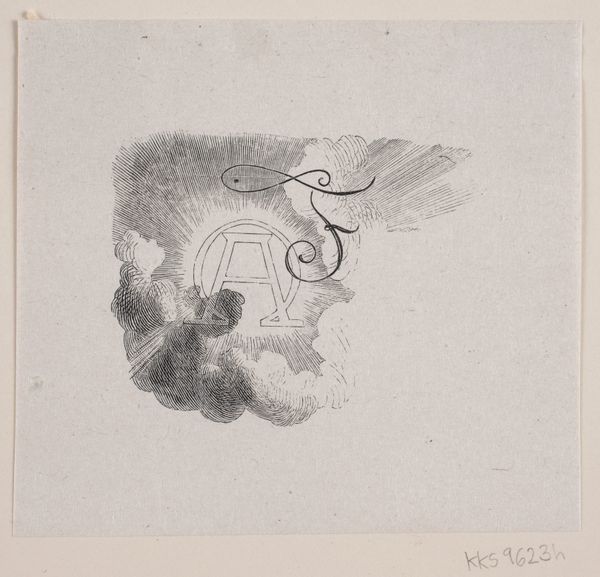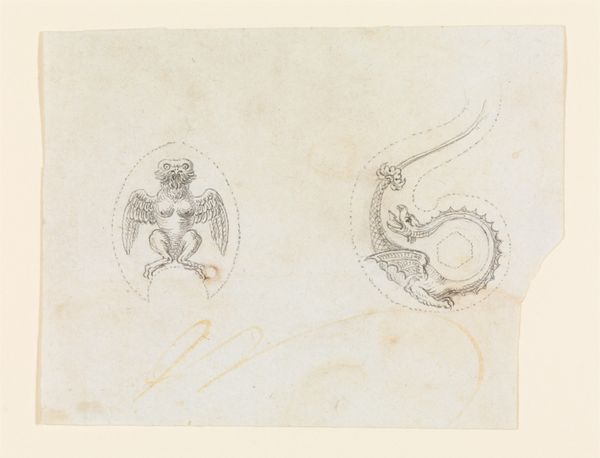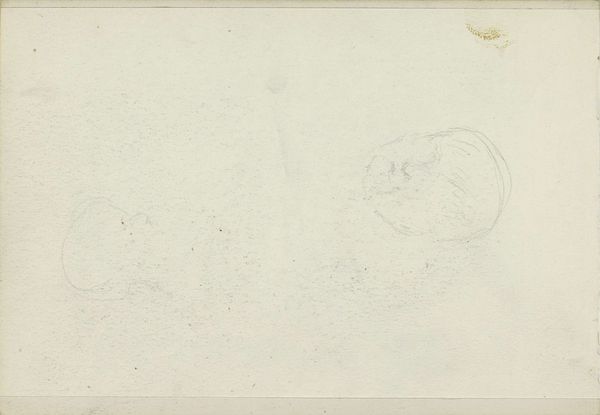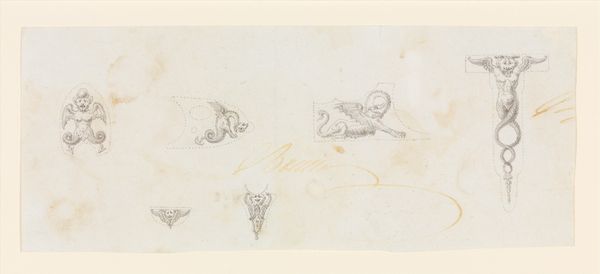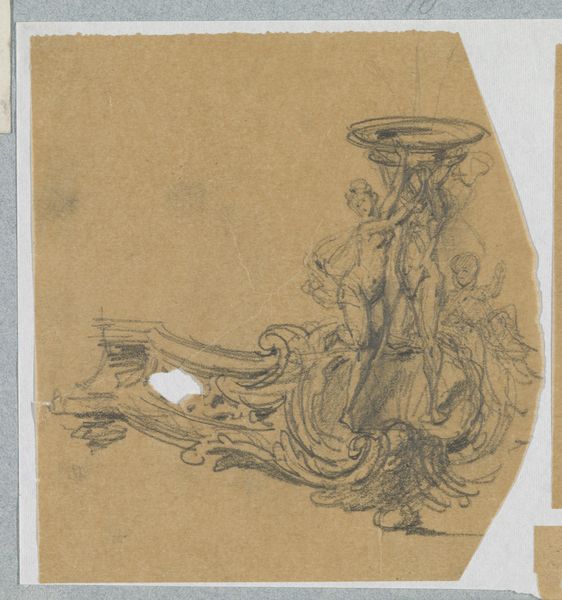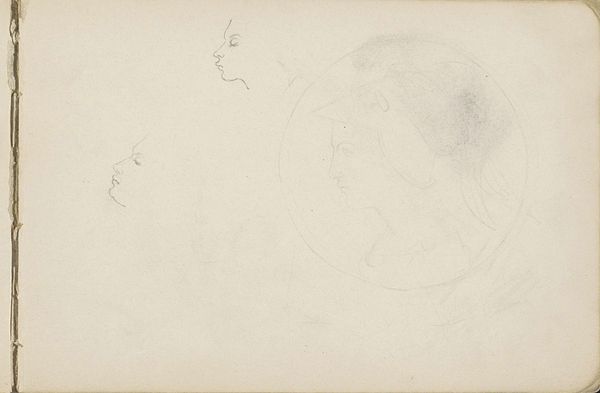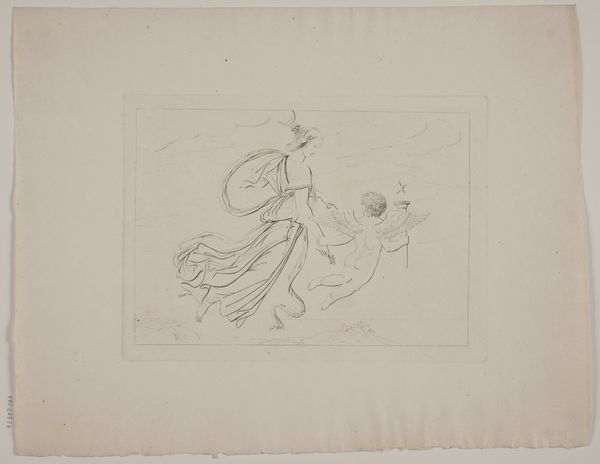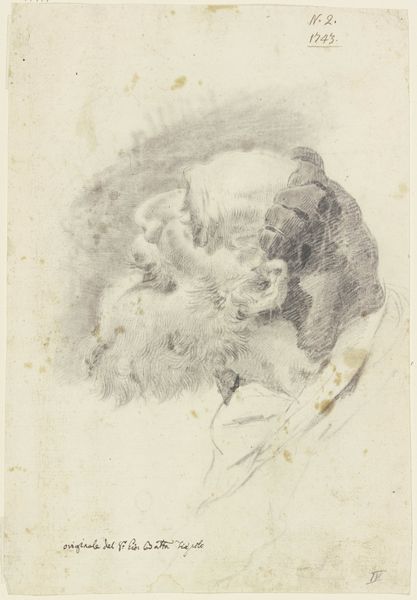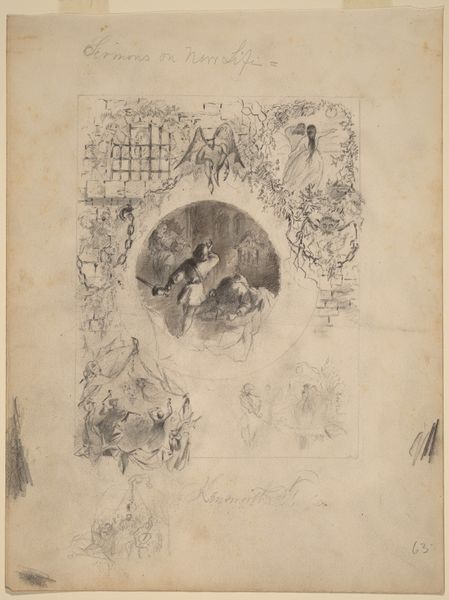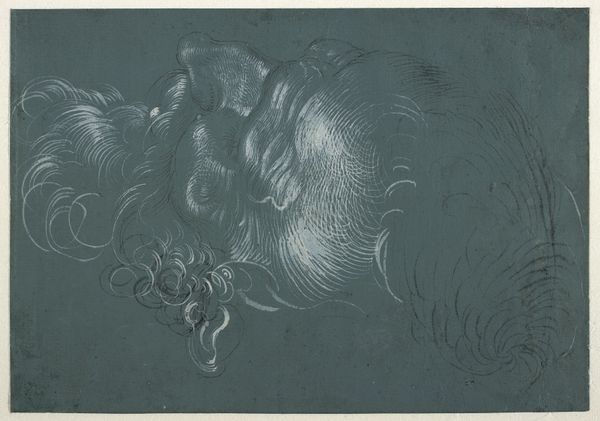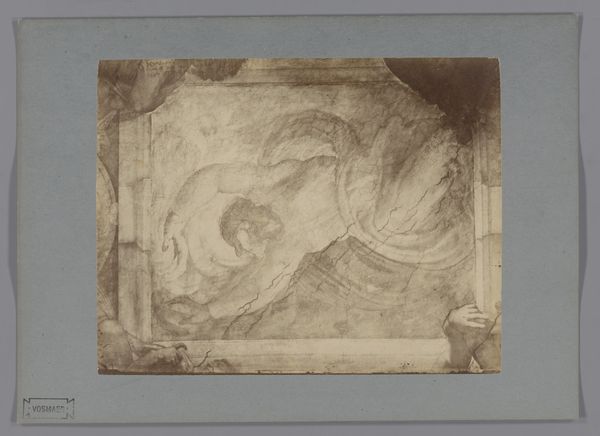
drawing, pencil
#
pencil drawn
#
drawing
#
neoclacissism
#
geometric
#
pencil
#
history-painting
Dimensions: 158 mm (height) x 172 mm (width) (bladmaal)
Curator: Let’s turn our attention to this drawing, "Del af et ionisk kapitel", or "Part of an Ionic Capital", dating from 1743-1809, by Nicolai Abildgaard. Editor: It feels immediately… unfinished. Delicate, almost ghostly lines suggest a grand structure, but the pencil medium gives it an intimate feel. Is that even marble that’s being proposed? Curator: Indeed. Abildgaard, a key figure in Danish Neoclassicism, situated himself firmly within the Enlightenment ideals, studying the antique world and using his art to investigate philosophical and political ideas. We can consider this study as his preparation to then reproduce certain political structures in a Neoclassical style. Editor: So, here we see the labor – literally, the handiwork – that goes into manifesting power through architecture. The careful lines, the geometric precision… this drawing isn’t just a plan; it’s evidence of production. Consider the work it took to both envision this piece and then reduce that concept into this simple medium. Curator: Precisely! Abildgaard wasn't just replicating forms. He was engaging with the ideologies they represented, connecting classical virtues to his contemporary world. Note the implied human form swirling in the background. Editor: Right. It is faint, yet its humanization gives even further evidence to labor, craft and creation. But there's an irony here, too. A study of power, rendered in such fragile material. The drawing itself becomes almost a political statement about the potential for power to become something so fleeting. Curator: The drawing certainly serves as a reminder that history is built, both physically and ideologically. And it invites us to question what values we choose to enshrine in our own structures. Editor: For me, it's the contrast between the monumentality of the envisioned capital and the humbleness of the material – pencil on paper – that I find most compelling. It’s in stark contrast to how we usually engage with structural forms that exist in public. Curator: A profound point. Editor: Thanks. I have an enriched view of Abildgaard and can see it in a new way, even. Curator: I’m left thinking about how even fragments can reveal broader historical and ideological narratives, provided we bring the right interpretive lenses.
Comments
No comments
Be the first to comment and join the conversation on the ultimate creative platform.

